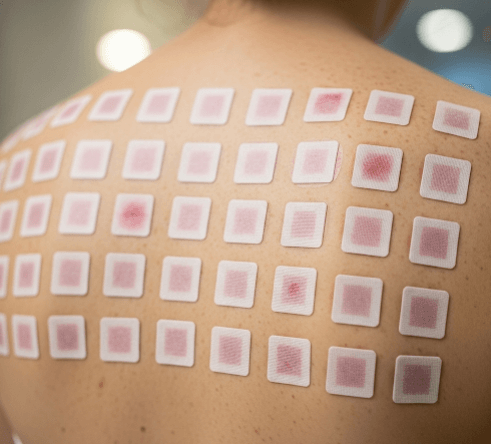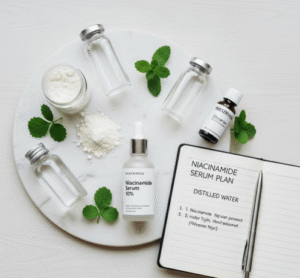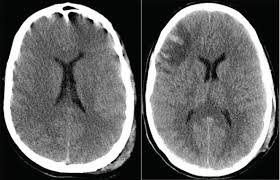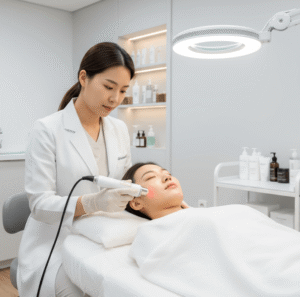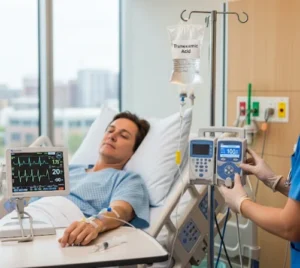➤ What it is
Contact Dermatitis is an inflammatory skin condition triggered when the skin comes into direct contact with an allergen or irritant. It manifests as redness, itching, swelling, dryness, and sometimes blisters. There are two main types:
- Irritant Contact Dermatitis (ICD) → Caused by direct skin irritation from chemicals, soaps, detergents, or occupational exposures.
- Allergic Contact Dermatitis (ACD) → Triggered by the immune system’s reaction to allergens such as nickel, fragrances, preservatives, or rubber.
Contact Dermatitis Testing refers to diagnostic methods used to identify the exact cause of dermatitis, enabling patients to avoid triggers and manage flare-ups effectively. The most common diagnostic tool is patch testing, where potential allergens are applied to the skin in small amounts and observed for reactions.
In Korea, where skin barrier research and preventive dermatology are highly developed, contact dermatitis testing is carried out using advanced patch testing methods, allergen panels, and digital analysis tools. This ensures accuracy, prevention of recurrences, and cosmetic-conscious care.
➤ Why it’s done
Testing for contact dermatitis is crucial for:
- Identifying Triggers → Determining the specific allergen or irritant responsible.
- Preventing Recurrence → Once triggers are known, they can be avoided.
- Tailored Treatment → Dermatologists can create personalized management plans.
- Improving Quality of Life → Reduces ongoing flare-ups and the burden of chronic inflammation.
- Cosmetic Considerations → Prevents scarring, pigmentation changes, and skin thickening.
In Korea, patients often seek testing early because of the strong cultural emphasis on preventive care and maintaining flawless skin health.
➤ Alternatives
While patch testing is the gold standard, other methods may also be considered:
- Standard Patch Testing
- Adhesive patches with small amounts of allergens applied to the back.
- Reactions monitored after 48–72 hours.
- Extended Patch Testing
- Includes additional allergens based on occupation or lifestyle.
- Useful for patients with unusual or resistant dermatitis.
- Prick Testing
- More often used for immediate allergic reactions (not delayed dermatitis).
- Helps differentiate contact dermatitis from food or inhalant allergies.
- Blood Tests (Specific IgE)
- Sometimes used in combination, though less specific for contact dermatitis.
- Elimination and Challenge Testing
- Removing suspected products from use and reintroducing to confirm reactions.
- Used when patch testing is inconclusive.
In Korea, patch testing is highly standardized, with allergen panels that include common global triggers as well as substances frequently found in Korean cosmetics, skincare, and occupational environments.
➤ Preparation
Proper preparation ensures accurate results in contact dermatitis testing:
- Medication Adjustments
- Stop using topical or oral corticosteroids at least 1 week before testing.
- Avoid immunosuppressants that may suppress skin reactions.
- Skin Condition
- Skin on the back should be free of rashes, wounds, or infections.
- Moisturizing is allowed, but medicated creams should be stopped before testing.
- Lifestyle Modifications
- Avoid excessive sun exposure before the test (UV light can alter results).
- Inform the dermatologist of all skincare, cosmetics, and workplace exposures.
- Korean Clinic Preparations
- Patients may receive skin cleansing and barrier-strengthening treatments before patch placement to ensure consistent results.
- Clinics also educate patients on test-day activities (e.g., no heavy exercise, no showering until patch removal).
➤ How it’s Done
Contact Dermatitis Testing typically involves patch testing, performed as follows:
Step 1: Allergen Selection
- Standard allergen panels (nickel, fragrances, preservatives, rubber, etc.).
- Customized panels for cosmetic ingredients, hair dyes, or occupational chemicals.
- In Korea, panels often include K-beauty-specific allergens (preservatives, fragrances, and herbal extracts).
Step 2: Patch Application
- Small patches containing allergens are placed on the patient’s back.
- Patches remain in place for 48 hours.
Step 3: Observation Period
- Patient avoids sweating, bathing, or strenuous activity during this time.
- Korean clinics often provide protective dressings and aftercare guidelines.
Step 4: Patch Removal and Reading
- First reading: after 48 hours.
- Second reading: at 72–96 hours to detect delayed reactions.
- Dermatologist grades reactions from negative to strong positive (+++).
Step 5: Result Interpretation
- Identified allergens are linked to patient’s exposures (e.g., cosmetics, workplace, personal care items).
- Korean clinics often provide digital reports with photographs, making results easy to track.
➤ Recovery
Testing itself has little downtime, but recovery involves post-test care and lifestyle adjustments:
- Mild Reactions → Redness, itching, or small blisters may occur on positive sites.
- Aftercare:
- Avoid scratching or applying strong creams directly on test sites.
- Gentle moisturizers can soothe irritation.
- Follow-up: Dermatologist explains results, provides trigger-avoidance strategies, and designs a long-term management plan.
Korean Recovery Practices:
- Clinics often provide post-test soothing treatments such as hydrating masks, LED therapy, or anti-inflammatory ointments.
- Patients receive personalized skincare recommendations with allergen-free Korean brands.
➤ Complications
Contact dermatitis testing is generally safe, but possible issues include:
- Irritation or Itching at patch sites.
- Persistent Reactions → Positive sites may remain red for several days.
- Pigment Changes → Rare post-inflammatory hyperpigmentation, more noticeable in darker skin.
- Flare-ups → Occasionally, underlying dermatitis may worsen temporarily.
In Korea, dermatologists carefully monitor these issues and often integrate cosmetic dermatology solutions to minimize pigment changes or irritation.
➤ Treatment Options in Korea
Korea has some of the most advanced facilities and protocols for contact dermatitis testing and management.
Why Korea is a Leader:
- Expanded Allergen Panels → Includes both international allergens and unique Korean skincare/cosmetic allergens.
- Precision Technology → Digital imaging used to record patch test reactions.
- Holistic Care → After testing, patients receive integrated management plans combining medical treatment, skincare, and preventive strategies.
- Medical Tourism Appeal → International patients often undergo testing in Korea for accurate diagnosis combined with dermatology-driven skincare advice.
Unique Korean Approaches:
- Customized cosmetic allergen testing for K-beauty users.
- Integrated follow-up programs with barrier repair facials, hydration therapy, and LED support.
- Dermatologist-guided K-beauty regimens to ensure safe skincare free of identified allergens.
- Collaboration between dermatologists, allergists, and cosmetic scientists for precision care.
✨ Final Thoughts
Contact Dermatitis Testing in Korea is not just about identifying allergens — it is about creating a comprehensive, personalized skin health plan. With advanced patch testing protocols, allergen panels tailored for Korean lifestyles, and holistic follow-up care, patients benefit from both medical accuracy and cosmetic-conscious management.
By integrating dermatology, allergy testing, and skincare science, Korea ensures that patients with contact dermatitis not only discover their triggers but also gain access to preventive treatments and long-term skin health strategies.
This makes Korea a global leader in contact dermatitis testing and care, offering precise diagnosis and effective, aesthetic-conscious management.

